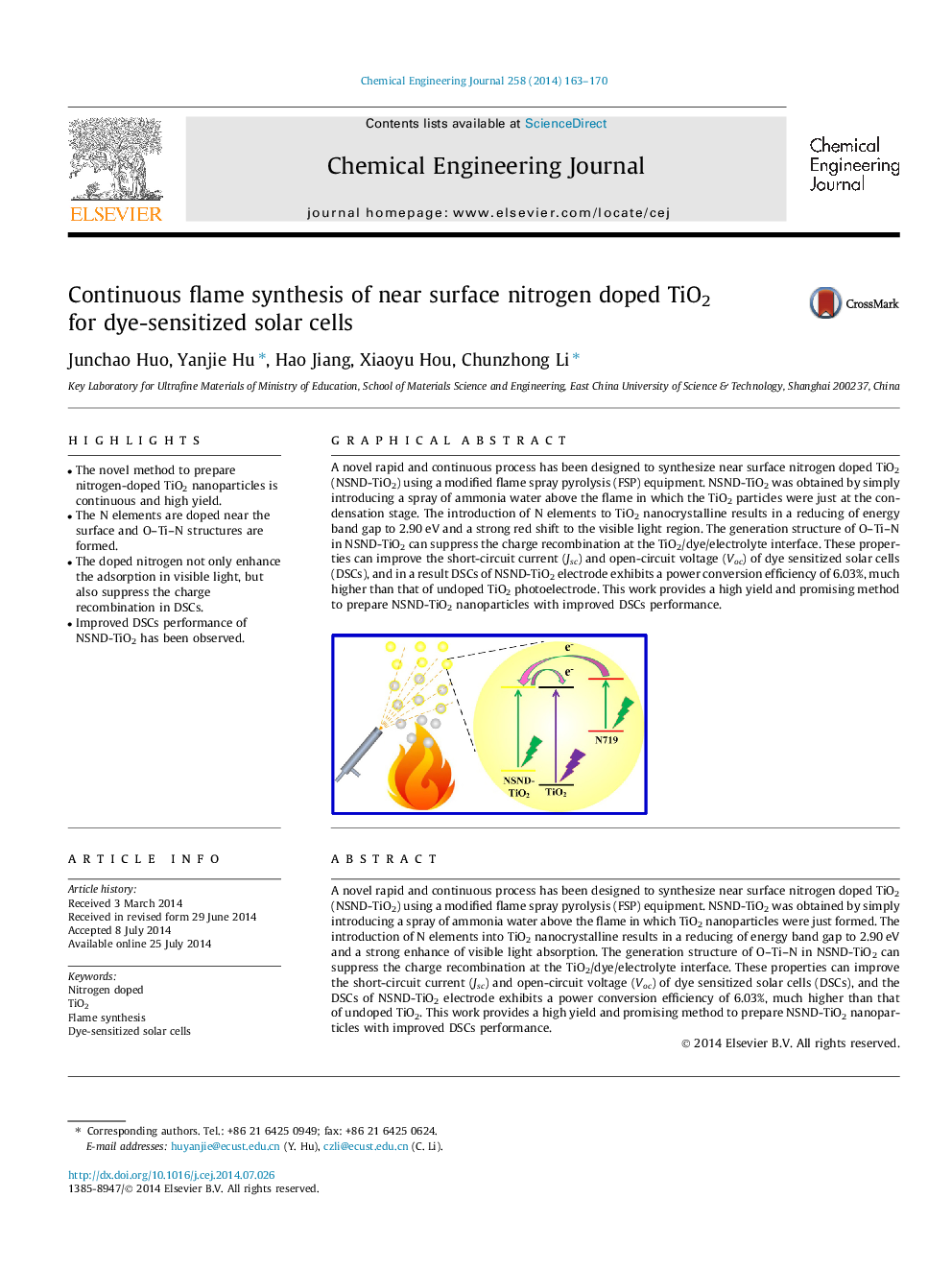| Article ID | Journal | Published Year | Pages | File Type |
|---|---|---|---|---|
| 146978 | Chemical Engineering Journal | 2014 | 8 Pages |
•The novel method to prepare nitrogen-doped TiO2 nanoparticles is continuous and high yield.•The N elements are doped near the surface and O–Ti–N structures are formed.•The doped nitrogen not only enhance the adsorption in visible light, but also suppress the charge recombination in DSCs.•Improved DSCs performance of NSND-TiO2 has been observed.
A novel rapid and continuous process has been designed to synthesize near surface nitrogen doped TiO2 (NSND-TiO2) using a modified flame spray pyrolysis (FSP) equipment. NSND-TiO2 was obtained by simply introducing a spray of ammonia water above the flame in which TiO2 nanoparticles were just formed. The introduction of N elements into TiO2 nanocrystalline results in a reducing of energy band gap to 2.90 eV and a strong enhance of visible light absorption. The generation structure of O–Ti–N in NSND-TiO2 can suppress the charge recombination at the TiO2/dye/electrolyte interface. These properties can improve the short-circuit current (Jsc) and open-circuit voltage (Voc) of dye sensitized solar cells (DSCs), and the DSCs of NSND-TiO2 electrode exhibits a power conversion efficiency of 6.03%, much higher than that of undoped TiO2. This work provides a high yield and promising method to prepare NSND-TiO2 nanoparticles with improved DSCs performance.
Graphical abstractA novel rapid and continuous process has been designed to synthesize near surface nitrogen doped TiO2 (NSND-TiO2) using a modified flame spray pyrolysis (FSP) equipment. NSND-TiO2 was obtained by simply introducing a spray of ammonia water above the flame in which the TiO2 particles were just at the condensation stage. The introduction of N elements to TiO2 nanocrystalline results in a reducing of energy band gap to 2.90 eV and a strong red shift to the visible light region. The generation structure of O–Ti–N in NSND-TiO2 can suppress the charge recombination at the TiO2/dye/electrolyte interface. These properties can improve the short-circuit current (Jsc) and open-circuit voltage (Voc) of dye sensitized solar cells (DSCs), and in a result DSCs of NSND-TiO2 electrode exhibits a power conversion efficiency of 6.03%, much higher than that of undoped TiO2 photoelectrode. This work provides a high yield and promising method to prepare NSND-TiO2 nanoparticles with improved DSCs performance.Figure optionsDownload full-size imageDownload as PowerPoint slide
